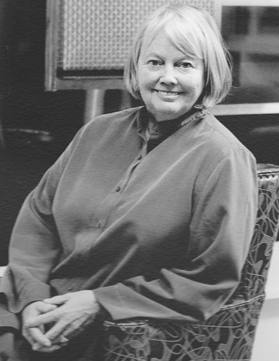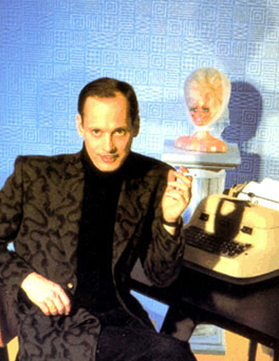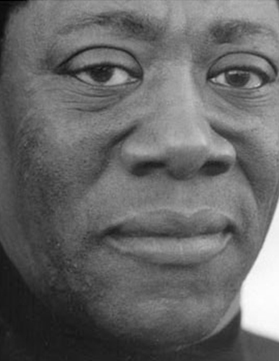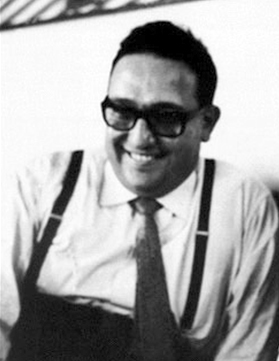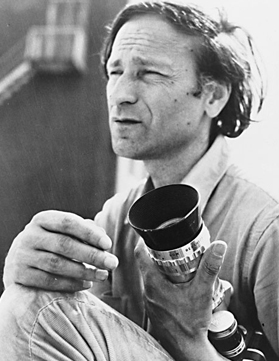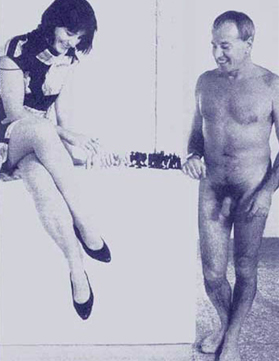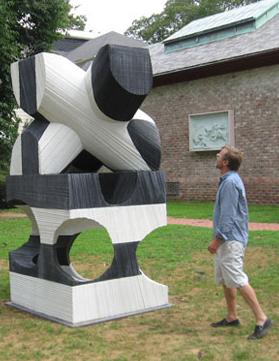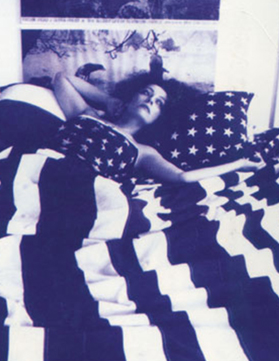Writing
Interviews
Yoko Ono: The Dragon Lady Speaks
Yoko Ono: The Dragon Lady Speaks
An interview with Yoko Ono which examines her views on art, music, poetry, philosophy, and politics.
Read MoreJohn Perreault on Streetworks and Telephone Music
John Perreault on Streetworks and Telephone Music
John Perreault discusses Streetworks and Telephone Music. Perreault’s work could be experienced in the exhibition Art By Telephone Recalled at La Panacee – Centre de Culture Contemporaine in Montpellier, France, through September 15, 2014. Interview and videography by Daniel Rothbart, New York City, February 4, 2014.
View John Perreault: Alphabetical T-Shirts, Street Works IV, Architectural League, 1969. Re-performed for Acciones en la calle: Street Works in New York and Latin America circa 1970 curated by Gillian Sneed, Amelie A. Wallace Gallery, SUNY Old Westbury, October 27, 2015. Interpreted by students in Professor Fred Fleisher’s “Creative Thinking” class. Videography by Daniel Rothbart.
Alanna Heiss on Sound, Space, and the City
Alanna Heiss on Sound, Space, and the City
“Learning how to accompany was one of the most valuable things I learned in order to work in the art world and in museums. I would accompany single artists, other people who were destined to become concert artists, and also choruses. It’s watching the artist for the sign of the cue, about what they want to do, and which they will communicate to you non-verbally, that makes you a good accompanist. It’s that very skill which has made me very good at working with artists, because I watch them all the time.”
Read MoreExcerpts from an Interview with Keith Sonnier
Excerpts from an Interview with Keith Sonnier
“I came to New York at a very unique time. There was a real dialogue between artists. People talked about work, not about how much money they made or how their prices were. A lot of different work and movements happened in a period of ten years, from Abstract Expressionism to Pop and Minimalism and one sandwiched right into the other. It was a very interesting time to be in New York and I must say I embraced New York when I first came here, I was so happy to be out of the country, and just to see contemporary art on such a large scale. Joseph Kosuth, Richard Serra, and I along with many other artists spent time together. We travelled and spent time with artists on the west coast and in Europe. A lot of us showed in Europe before we showed in New York, I showed in Germany before I showed in New York and Richard (Serra) showed in Italy before he showed in New York. A number of us had had some European exposure.”
Read MoreExcerpts from an Interview with John Waters
Excerpts from an Interview with John Waters
“Do I strive for art in reverse? Well in some ways. Anybody can take pictures off a television screen, so this work certainly isn’t about photography. It’s about editing really. It’s art work based on humor and editing and reading and what narrative is and how anything, even one second, can be narrative if its correctly displayed and titled. Much of the source material that I use failed in the movie business. It is the worst parts of my movies, the technical failures that work very well in the art world. So I guess that is art in reverse. Its a quote of mine that I barely remember saying. Its not one that’s often thrown in my face.”
Read MoreWolfgang Becker: Reflections On Art 1/2
Wolfgang Becker: Reflections On Art 1/2
Wolfgang Becker Interviewed by Daniel Rothbart at the Ludwig Forum for International Art, Aachen, Germany, Friday October 26, 2012.
ludwigforum.de
Wolfgang Becker: Reflections On Art 2/2
Wolfgang Becker: Reflections On Art 2/2
Wolfgang Becker Interviewed by Daniel Rothbart at the Ludwig Forum for International Art, Aachen, Germany, Friday October 26, 2012.
ludwigforum.de
From the Devil’s Music to the Temple of Soul: An Interview with Clarence Clemons
From the Devil’s Music to the Temple of Soul: An Interview with Clarence Clemons
“When I was nine my father bought me an alto saxophone. I wanted an electric train but I finally did learn to love it. My uncle Herbert played piano and every Sunday we would all get together at my grandfather’s house before church. My grandfather had a big farm down the country where he was the preacher at the black church. Every Sunday we would sing devotions in the morning, and I really wanted to eat, but we had to go through this ritual. Then one day my uncle Herbert started playing these blues riffs on the piano while my grandfather was getting dressed. My grandfather came running in and said, “Don’t you ever play that in my house again.” My grandfather didn’t know what it was but he knew it was a sound he didn’t like in his house. There was something in those chords that made my grandfather upset and I wanted to know what it was. I wanted to know what it was that had the power to cause my grandfather to come running in with no shirt on. For my grandfather, rock’n’roll was devil’s music. I saw Elvis Presley on TV and what the music did to people, and I saw what church music did to people, and I saw a correlation between the two. My music is between gospel and rock’n’roll.”
Read MoreDuchamp on Artists: Excerpts from an Interview with Arturo Schwarz
Duchamp on Artists: Excerpts from an Interview with Arturo Schwarz
“He encouraged independence of thinking and starting from the tabula rasa. He demonstrated that one must contribute to an ambitious visual and intellectual undertaking, never repeating oneself and never repeating what somebody else has already done. He believed in the importance of being oneself, and independent, never looking for models. Being one’s own lamp as the Buddha said. That I think is Duchamp’s main lesson to contemporary artists.”
Read MoreLisa Park: Reflections on Performance Art and Water
Lisa Park: Reflections on Performance Art and Water
Interview by Daniel Rothbart, January 14, 2015, New Museum, New York City, © Daniel Rothbart, 2015.
Jonas Mekas on Miotte vu par Raúl Ruiz
Jonas Mekas on Miotte vu par Raúl Ruiz
“Painting and cinema are two different arts and every art is an art in itself. But all muses are on the same Olympus and they talk to one another. I can tell you why I like Ruiz’s film. In the first place I like it because it does not tell what Jean Miotte’s paintings are all about. Rather it is about the process of painting, struggling, sweating, getting tired, and fighting. It is one of the best films I have seen that deals with the struggle and hard work of making a painting. For me that is the essence of this film.”
Read MoreExcerpts from an Interview with Achille Bonito Oliva
Excerpts from an Interview with Achille Bonito Oliva
“Through my exhibition Minimalia, I wish to exhibit historical works and recent artistic production that characterize a reductive linguistic tendency that I would define as Mediterranean or particularly Italian. This art is not based on the geometry of straight lines but rather on that of the curve. It is a geometry that comes from renaissance perspective, and such a geometry describes organic form, where figurative imagery and geometric abstraction intermingle. It is a complex geometry that may include deconstruction, ornamentation, and figuration. This geometry has helped to develop a language that embraces the pluralism of expression of Italian art.”
Read MoreInside Out: An Interview with Mel Kendrick
Inside Out: An Interview with Mel Kendrick
“I think that conflict or tension is at the heart of the work. When I was doing Core Samples I was working with tree sections and I think the geometry became the stand-in for the intellect. It could be seen as culture versus nature. This work I’m doing now is very much about the handmade versus the geometric. These forms could quite easily be programmed into a computer and done that way, but they’re more about an intuitive geometry. I did my Master’s thesis on ancient stone circles in England and Wales with Tony Smith . The idea was that the geometry of the smaller circles was often the geometry of people holding hands in a line and swinging the arcs in a prescribed manner that were then marked on the ground. The final circles have been much analyzed – they were not actually circles, and they were never simple.”
Read MoreThe Floating Art World: Alexandra Munroe On Mariko Mori, Takashi Murakami, Yoko Ono, and Japan
The Floating Art World: Alexandra Munroe On Mariko Mori, Takashi Murakami, Yoko Ono, and Japan
“Mariko Mori’s conception and realization of Wave UFO represents an altogether new art form for which no name yet exists. It is sculpture, installation, design, performance art, live media, bio-technology and even car design: the skin of the vessel is made by Lamborghini car manufacturers yet exhibits an opalesque surface that recalls the finest sixteenth century Nashiji lacquer techniques. Her ability to freely extract from such radically diverse references – traditional Japanese aesthetics, cutting-edge media and the mind of contemporary culture – to create a vision as original and precisely realized as Wave UFO suggests, to me, a certain creative genius.”
Read MoreInterview with Peter Fend
Interview with Peter Fend
Interview by Daniel Rothbart, January 18, 2015, Long Island City, NY.
Ultra Violet on Art, Artists and Andy
Ultra Violet on Art, Artists and Andy
“American dreams and disasters, fame being part of the dreams. I think that all the younger artists are obsessed with Warhol and what they are obsessed with is rather the fame more than the meaning of his work. What makes Warhol unique among the other pop artists is that he really depicted the American dream. Neither Oldenburg nor Lichtenstein nor any of the other pop artists did that. The American dream is embodied by dollar sign, you know, prosperity, beauty and fame like the movie stars, glamour, and smiles. It seems to be happiness. But this side of the American Dream was not enough for Warhol. What is fascinating is that he also did the reversal of the dream, which are the American disasters. He painted American highways littered with car crashes, the mushroom of the atomic bomb (which only America has used), and the electric chair.”
Read MoreTom Eccles on New Projects by Richard Long
Tom Eccles on New Projects by Richard Long
“The most interesting thing for me was going to the quarries where I observed the ease and confidence with which he makes a work. They are not toiled over or overly considered. Neither does he view the work in metaphysical terms, he is a man of the earth. For me all this was very important because my school used to be opposite the Museum of Modern Art in Edinburgh, which has a Cornish slate piece by Richard Long. It was intriguing on a conceptual level and for me it served as an introduction to contemporary art. I would go each day and move one of the stones and, over time, I felt that I had participated in the work though I saw that it hadn’t changed.”
Read MoreNative Visions in History and Modernity: An Interview with W. Richard West
Native Visions in History and Modernity: An Interview with W. Richard West
“Hopefully we all appreciate beauty. Beauty does good things for humanity as far as I’m concerned and our objects convey a sense of beauty to people who see them. But much more particularly, Native art is a window on the soul of Native America, and always has been. Historical and traditional material is equally revealing. You cannot look at a painting or a collage made by Jaune Quick-To-See Smith or a sculpture that has political knife edges to it, created by Bob Haozous, without having a better appreciation of what is going on in this segment of American cultural heritage. Native culture sits right at America’s beginning point, is very much a part of its present, and will be a part of its future.”
Read MoreWolfgang Becker: Reflections on Paris and French Art
Wolfgang Becker: Reflections on Paris and French Art
Wolfgang Becker, former Founding Director of the Ludwig Forum for International Art in Aachen, Germany, reflects on his long engagement with Paris and French culture. A Chevalier de L’Ordre des Arts et des Lettres, Becker discusses his time at the Sorbonne, as German Commissaire for the Paris Biennial, the founding of the Centre Georges Pompidou and more. Interviewed by Daniel Rothbart in Paris on December 14, 2014.
Israeli Identities: An interview with Rafi Gamzou
Israeli Identities: An interview with Rafi Gamzou
“I think that irony and humor are crucial parts of the Jewish and Israeli experience. If you examine Jewish humor there is a lot of self-mockery. This is often true of Israeli humor as well. Deflating Israeli myths is a recent manifestation of irony, but for some time irony and humor have become a basic means of survival. Especially with the tension we live under in Israel. Humor, and black humor is part of it, is necessary. Our country in its short history has fought so many wars and struggles. Now young people are allowing themselves to “revise” some of the myths and paradigms of Israel’s founders, and I would say that that is natural and healthy in a Democratic, open society that examines itself.”
Read MoreAn Interview with Gillo Pontecorvo
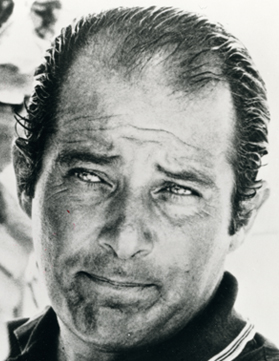
An Interview with Gillo Pontecorvo
Private video: Gillo Pontecorvo in Conversation with Daniel Rothbart
Rome, Italy, by Telephone | © Daniel Rothbart, 1999. For information, contact daniel@danielrothbart.org
Interview with Arturo Schwarz
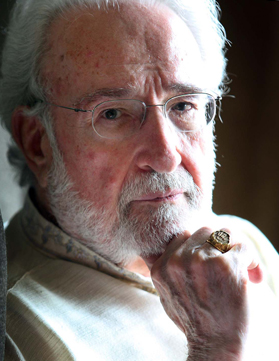
Interview with Arturo Schwarz
Private video: Arturo Schwarz in Conversation with Daniel Rothbart
Milan, Italy, by Telephone | © Daniel Rothbart, 1998. For information, contact daniel@danielrothbart.org
The Dragon Lady Speaks: An Interview with Yoko Ono
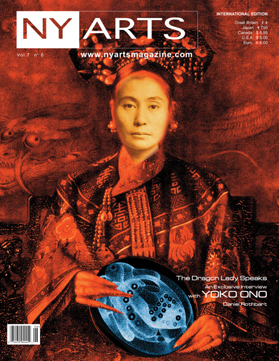
The Dragon Lady Speaks: An Interview with Yoko Ono
Private video: The Dragon Lady Speaks: An Interview with Yoko Ono
An Interview with Yoko Ono by Daniel Rothbart, The Dakota, New York, NY, May 2, 2002. © Daniel Rothbart, 2002.
For information, contact daniel@danielrothbart.org
The Dragon Lady Speaks: An Interview with Yoko Ono (follow-up)

The Dragon Lady Speaks: An Interview with Yoko Ono (follow-up)
Private video: The Dragon Lady Speaks: An Interview with Yoko Ono by Daniel Rothbart
Follow-up conversation, May 6, 2002. © Daniel Rothbart, 2002.
For information, contact daniel@danielrothbart.org
